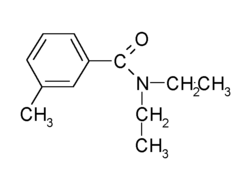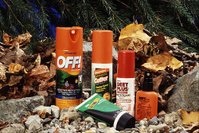The presence of very low concentrations of human and animal pharmaceuticals and antibiotics, natural and synthetic hormones, detergents, insecticides, and other 'organic waste-related chemicals' in US streams was documented in a 2002 US Geological Survey. The report identifies 95 chemicals that eventually make their way into our drinking water. Drinking water standards or health advisories have been set for only 81 of the 95 chemicals. Coprostanol (a fecal steroid), N-N-diethyltoluamide (an insect repellant), caffeine, triclosan (an antimicrobial disinfectant), tri (2-chloroethyl) phosphate (a fire retardant), and 4-nonylphenol (a detergent by-product) appeared in the water samples most often.
An update, released in August 2004, says that sewage treatment plants do not remove the chemicals--they are, in fact, part of the problem. Robert Morris, MD, PhD, an environmental health consultant and professor at Tufts University, says, "... Treatment systems were all initially designed to get rid of bacteria and viruses. They have filters and use chlorine, but that doesn't do a whole lot to get rid of chemical contaminants." Among those contaminants are pharmaceuticals that people excrete as well as any unused drugs that people dump into a drain or down the toilet. The amount of chemical contamination in drinking water depends upon the number and the size of the sewage treatment plants that dump effluent into the river or lake which supplies the water. Some areas of the country have more chemicals in their water than others.
No one is sure how--or if--these chemicals affect human health. Robert Morris says, "The presumption has been that the stuff gets so diluted that it won't cause a problem. Whether or not that's true is another issue. People used to think that about microbes and bacteria, and discovered they were pretty wrong about that.... There's evidence that concentrations coming out of treatment plants have an effect on things living in the water. They're obviously going to get the highest exposure. Whether the lower exposure has an effect on humans, we don't know." Herb Buxton, coordinator of the Toxic Substances Hydrology Program, expresses special concern about the presence of antibiotics that may foster antibiotic-resistance in microbes as well as the unknown effect of natural human hormones and synthetic hormones in the water. Synthetic hormones come from birth control pills, hormone supplements, and estrogen-like compounds found in detergents. Although Morris says that "[t]here's no cause for panic," he does recommend that pregnant women or women who are trying to get pregnant drink bottled or filtered water. (Since bottled water may simply be tap water from an unknown source, filtered water seems more appropriate.)
Davis, Jeanie Lerche. Prozac in Drinking Water? Likely So. http://my.webmd.com/content/Article/92/101794.htm
COPYRIGHT 2004 The Townsend Letter Group
COPYRIGHT 2004 Gale Group



